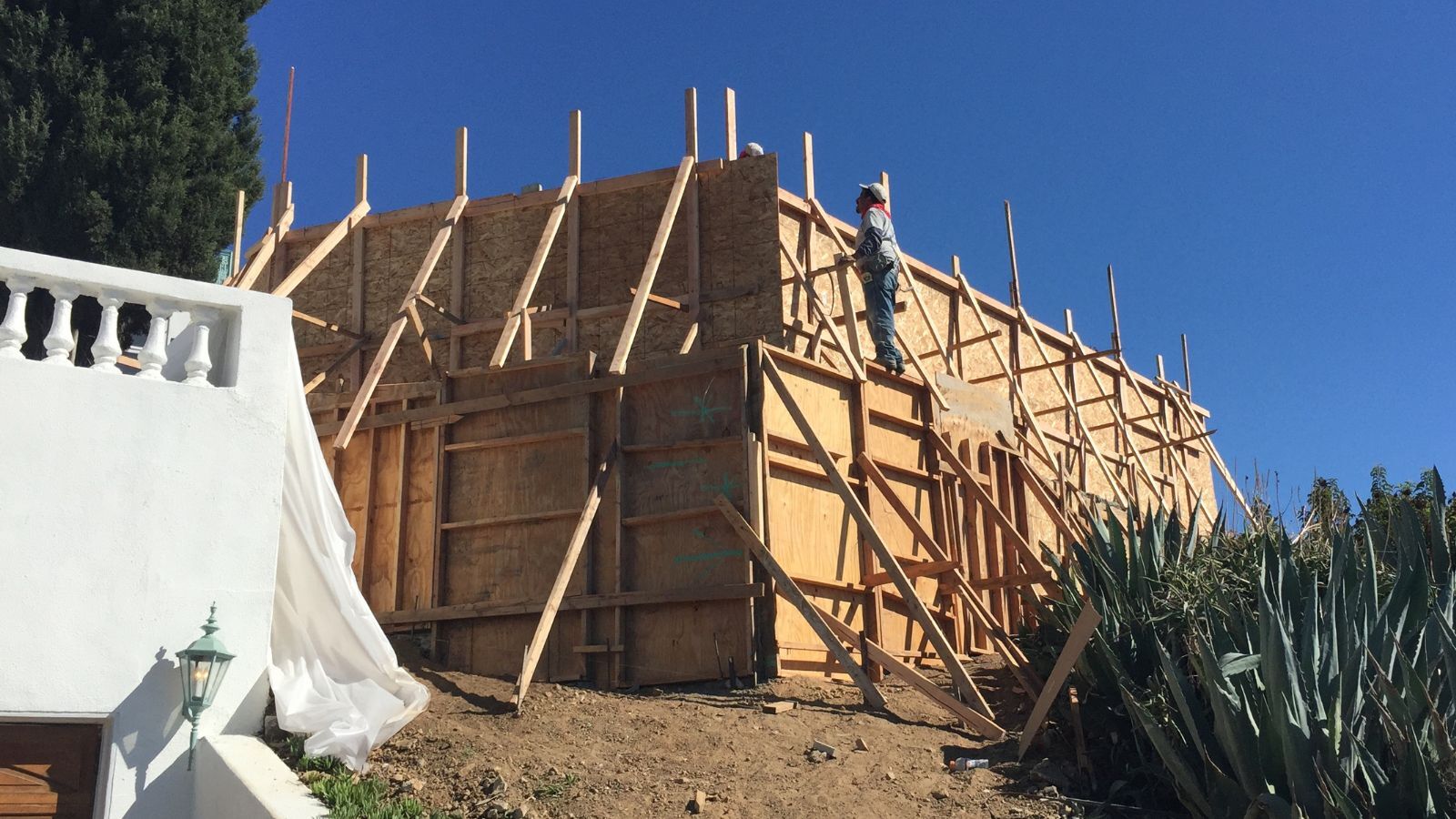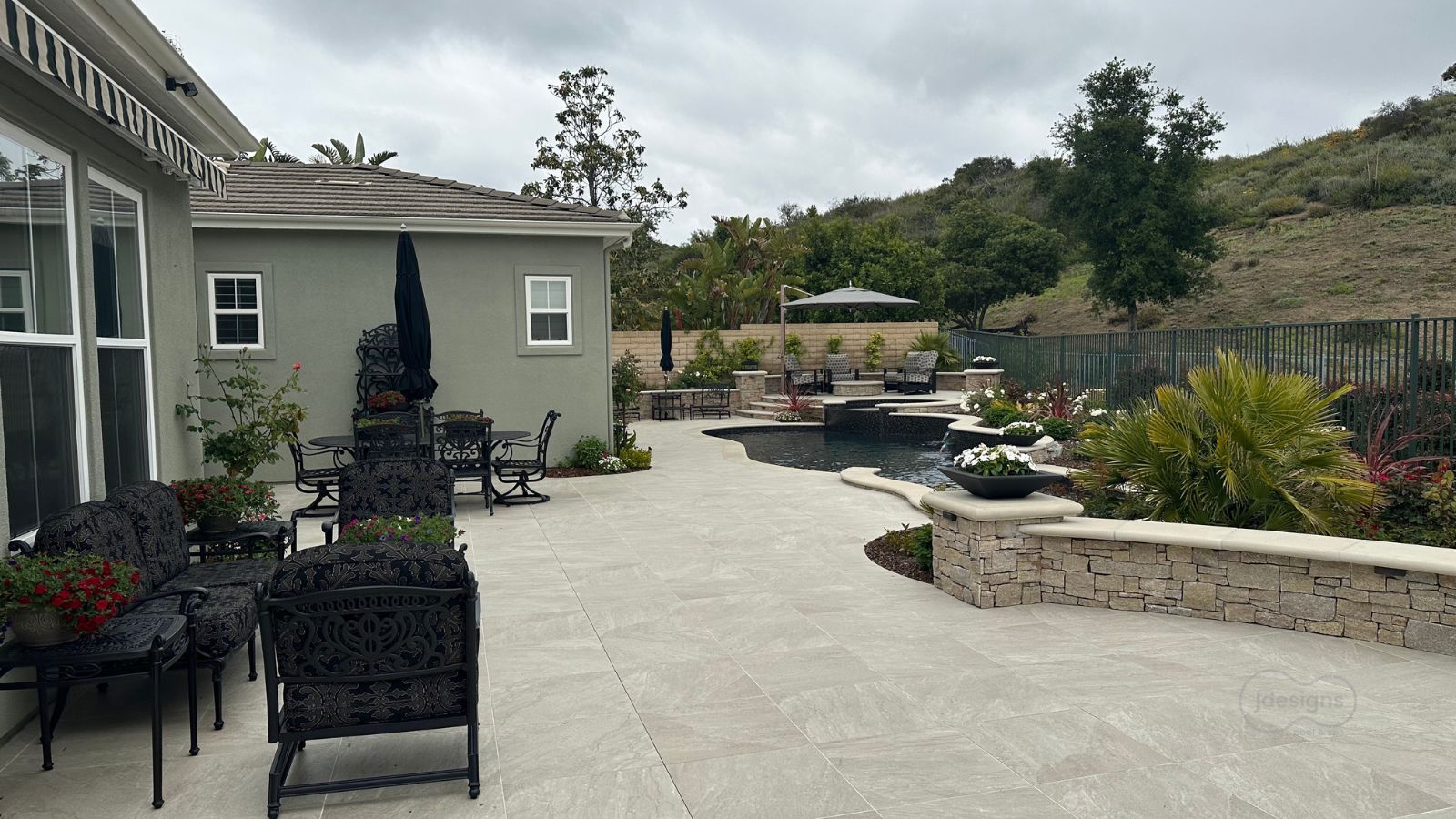How Much Does It Cost to Heat a Pool in LA with a Natural Gas Heater?
If you’ve ever felt a pang of guilt after switching on your pool heater and then saw your gas bill, you’re not alone! Many pool owners think heating...
3 min read
JC Escudero : Oct 7, 2025

Pool forming is the process of building a temporary structure that shapes the walls, steps, and features of your pool while concrete is poured and cured. Think of it like a mold: the forms hold the steel reinforcement in place and give the concrete its final shape until it hardens.
Without solid forming, concrete can shift, sag, or leak through gaps, leaving weak spots or structural defects. This is especially important for pools on sloped yards or hillside properties, where forms carry extra pressure and weight.

When concrete is sprayed or poured, it’s incredibly heavy. If the forms aren’t installed or braced correctly, they can bend, crack, or even collapse, leaving you with a major cleanup and the need to start over from scratch.
Poorly secured forms can also allow steel reinforcement to shift during vibration from shotcrete. That leads to hollow spaces, known as honeycombs, which weaken the structure and shorten the pool’s lifespan.
Bottom line: Strong, well-built forms aren’t an option; they are one of the most critical steps in ensuring your pool is safe and built to last.
Builders use various materials for pool forming, each with its own pros and cons.
Wood remains the top choice for most builders because it allows full customization. Unlike prefabricated aluminum or plastic forms, wood can be cut and braced to fit virtually any design.
Aluminum forms are often used for larger commercial projects or when speed and reuse are priorities, but they’re not ideal for pools with custom features.
Plastic or composite forms can make sense in very humid climates where wood deteriorates quickly, but they don’t offer the same flexibility for custom builds.

Not all wood is created equal. For pool forming, plywood is typically the best option, but the type you choose matters.
For pool forming, structural strength is more important than appearance. That’s why marine-grade plywood is often the best investment for safety and durability.

Even with the right material, installation is critical. Poorly braced forms can collapse under the sheer weight of concrete. Imagine baking a cake: if the pan is flimsy, everything spills over and creates a mess.
To prevent collapse:
A small mistake here can cost thousands in lost material, labor, and time, making form quality one of the most essential investments in your pool.

At the end of the day, your pool is only as strong as the forms that shape it. Choosing the wrong material or setting it up incorrectly can lead to collapses, honeycombs, and thousands of dollars in wasted materials.
The good news is, by understanding the role of pool forming and the strengths of wood versus alternative materials, you’re now in a position to avoid these costly mistakes. Remember: wood, especially plywood, remains the most versatile option for both standard and custom pool designs, such as steps and benches.
Your next step? Talk with your pool builder about which form material they recommend for your soil and slope conditions, and don’t be afraid to ask how they’ll secure the forms against collapse.
Ready to take the next step? Contact us today for a pool design consultation and get expert guidance on building a pool that’s safe, durable, and customized to your vision.

If you’ve ever felt a pang of guilt after switching on your pool heater and then saw your gas bill, you’re not alone! Many pool owners think heating...

Is Large Format Tile Right for Your Pool Project? What Every Homeowner Should Know Thinking about building or transforming your pool with...

You just invested in a brand new pool. What’s next? Thinking you can handle pool care with a few YouTube videos and a set of chemicals?